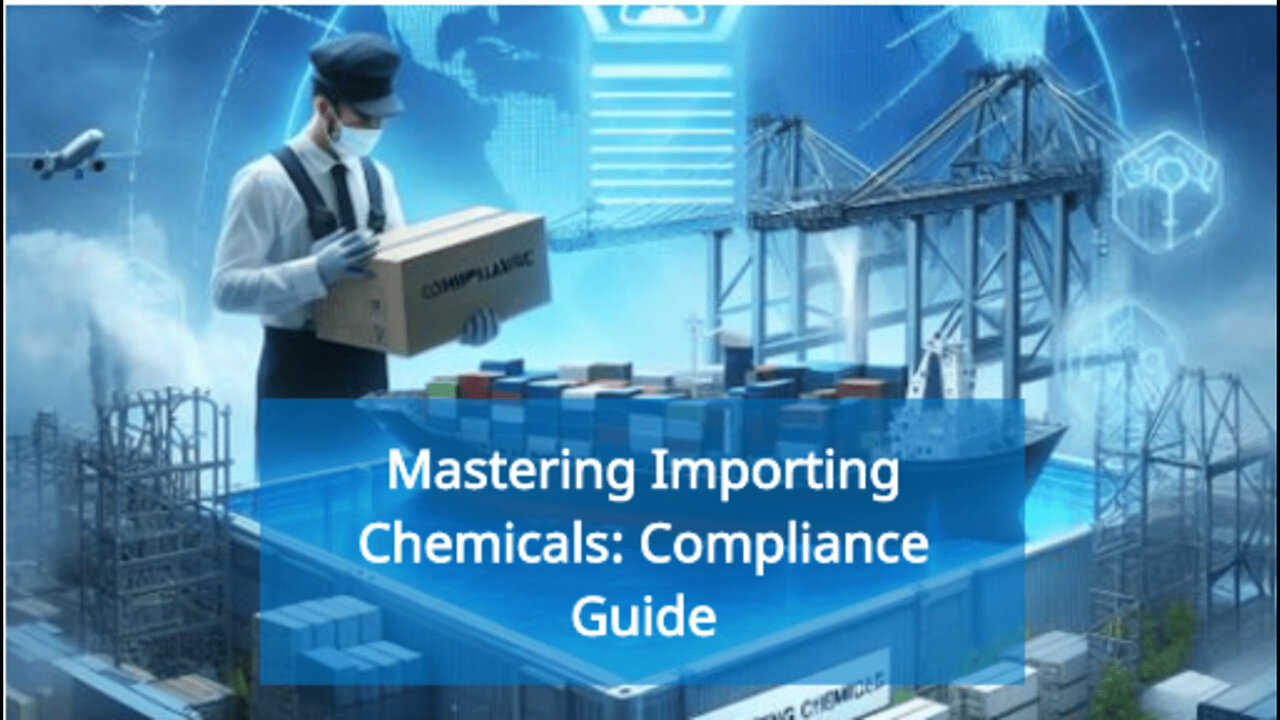Premium Only Content

Mastering the Import Process for Goods with Chemicals and Hazardous Substances
ISF Solution | (832-904-9333)
[email protected] | www.isfsolution.com
This video provides a deep dive into the import process for goods subject to chemicals and hazardous substances regulations. It begins by emphasizing the importance of identifying the specific chemicals or substances involved in the importation. This step is crucial for understanding the classification and associated hazards of the goods.
The next step discussed in the video is complying with the Importer Security Filing (ISF) requirements. ISF is a mandatory electronic filing that needs to be submitted to US Customs and Border Protection (CBP) before the goods are loaded onto a vessel. The filing provides essential information about the nature, quantity, and origin of the goods.
The video also highlights the need to assess customs bond requirements for importing such goods. A customs bond acts as a financial guarantee to ensure the payment of duties, taxes, and fees, as well as compliance with customs regulations.
Compliance with chemicals and hazardous substances regulations is another important aspect discussed. This includes proper labeling and packaging of the goods, obtaining necessary permits or licenses, and adhering to specific storage and transportation requirements. Compliance with these regulations is crucial for the safety of individuals handling the goods and the environment.
Working with a reputable customs brokerage is highly recommended when importing goods subject to these regulations. A customs broker can provide valuable guidance throughout the import process, helping with documentation, customs clearance, and ensuring compliance with all applicable regulations.
Finally, the video emphasizes the importance of post-entry compliance. Importing goods subject to chemicals and hazardous substances regulations requires ongoing monitoring, record-keeping, and periodic audits to ensure continued adherence to regulations. This includes maintaining proper documentation, conducting inspections, and promptly addressing any compliance issues.
In conclusion, importing goods subject to chemicals and hazardous substances regulations necessitates a thorough understanding and compliance with a complex set of rules. By following the steps outlined in this video and working with a customs brokerage, importers can successfully navigate the import process while ensuring compliance with all applicable regulations.
#usimportbond #isfcustomsbroker #uscustomsclearing #isfentry
Video Disclaimer Here: For educational purposes - No affiliation with US government sectors.
00:26 Identify Chemicals and Hazardous Substances: Before importing goods subject to chemicals and hazardous substances regulations, it is crucial to identify the specific chemicals or substances involved and understand their classification and associated hazards.
00:54 Compliance with ISF Requirements: Comply with the Importer Security Filing (ISF) requirements by submitting mandatory electronic filings to U.S. Customs and Border Protection at least 24 hours before the goods are loaded onto a vessel destined for the United States.
01:26 Customs Bond and Regulations Compliance: Assess customs bond requirements to guarantee payment of duties and compliance with customs regulations. Ensure compliance with regulations by proper labeling, packaging, obtaining permits, and adhering to storage and transportation requirements. Work with a customs brokerage for guidance and maintain post-entry compliance through monitoring and audits.
-
 2:43:56
2:43:56
TimcastIRL
5 hours agoDemocrats COLLUDED With Epstein To HURT Trump, Emails BACKFIRE
228K74 -
 11:32:19
11:32:19
Dr Disrespect
14 hours ago🔴LIVE - DR DISRESPECT - ARC RAIDERS - STELLA MONTIS QUESTS
242K17 -
 5:20:41
5:20:41
SpartakusLIVE
8 hours agoSolos on WZ to Start then ARC?! || Friends: UNBANNED
44.2K1 -
 12:58
12:58
Cash Jordan
8 hours agoMexican MOB OVERTHROWS Capital... as "Socialist President" FLOODS AMERICA with CARTELS
32.7K11 -
 23:13
23:13
Jasmin Laine
10 hours agoPBO Breaks His Silence—“This Is Soviet Stuff”… and the Panel EXPLODES
25.5K19 -
 1:17:26
1:17:26
Jamie Kennedy
22 hours agoCatching Up With Deep Roy: JKX Stories, Star Wars Secrets, and Total Chaos | Ep 231 HTBITY
19.3K3 -
 1:28:42
1:28:42
ThisIsDeLaCruz
4 hours ago $1.59 earnedThe Secrets Behind Madonna’s Legendary Live Sound
22.1K7 -
 1:22:15
1:22:15
Glenn Greenwald
8 hours agoTrump and JD Vance Weigh in on the MAGA Civil War Over Tucker; Zelensky's Top Associates Embroiled in $100 Million Corruption Scandal; FBI's Ongoing Concealment About Trump Shooter | SYSTEM UPDATE #548
126K109 -
 2:34:51
2:34:51
megimu32
5 hours agoON THE SUBJECT: 2000s Pop Punk & Emo Nostalgia — Why It Still Hits
22.6K6 -
 3:44:13
3:44:13
VapinGamers
5 hours ago $1.17 earnedBattlefield RedSec - Getting Carried Maybe? I Need the Wins! - !rumbot !music
15.2K3